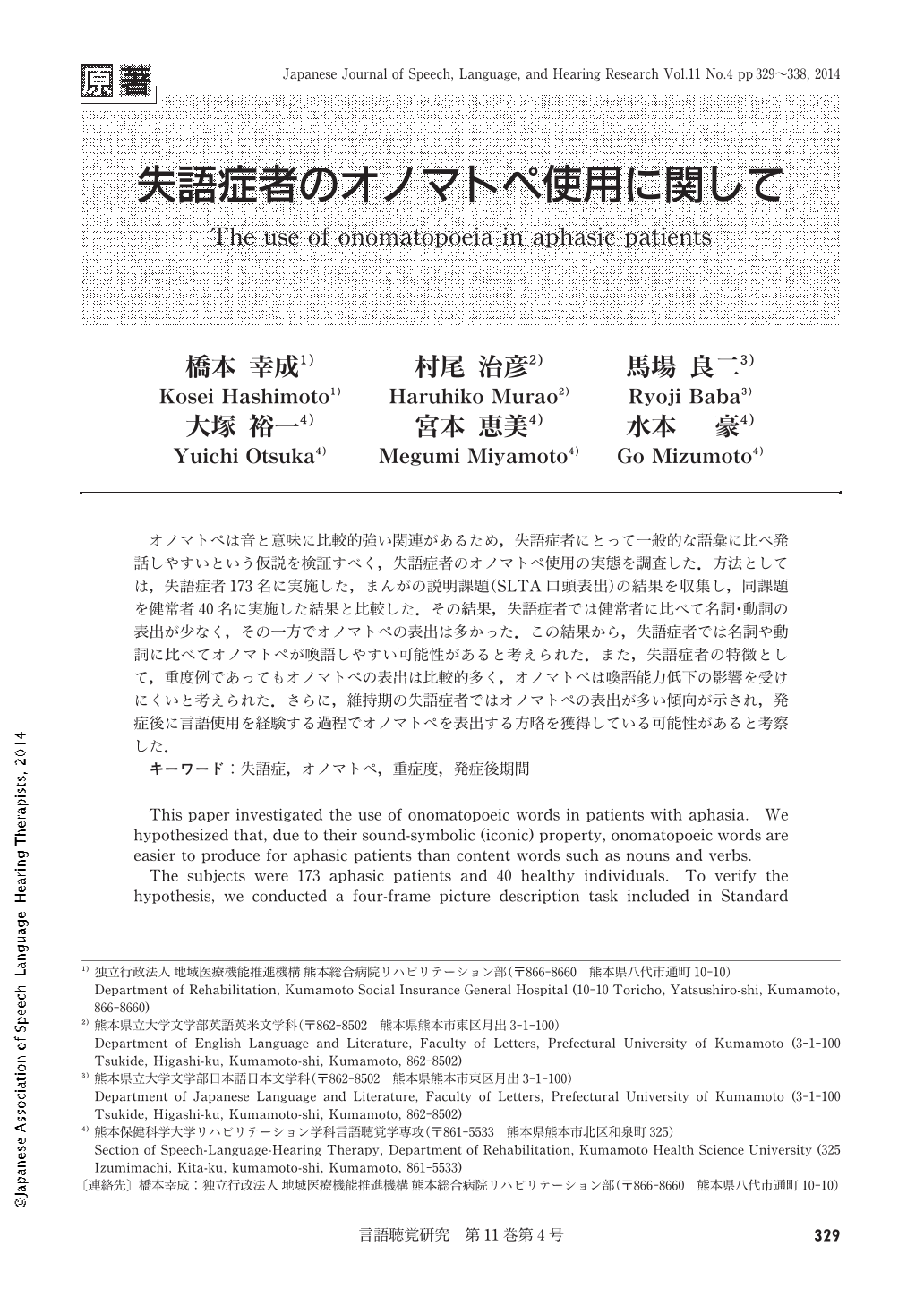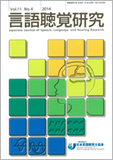Japanese
English
- 有料閲覧
- Abstract 文献概要
- 1ページ目 Look Inside
- 参考文献 Reference
オノマトペは音と意味に比較的強い関連があるため,失語症者にとって一般的な語彙に比べ発話しやすいという仮説を検証すべく,失語症者のオノマトペ使用の実態を調査した.方法としては,失語症者173名に実施した,まんがの説明課題(SLTA口頭表出)の結果を収集し,同課題を健常者40名に実施した結果と比較した.その結果,失語症者では健常者に比べて名詞・動詞の表出が少なく,その一方でオノマトペの表出は多かった.この結果から,失語症者では名詞や動詞に比べてオノマトペが喚語しやすい可能性があると考えられた.また,失語症者の特徴として,重度例であってもオノマトペの表出は比較的多く,オノマトペは喚語能力低下の影響を受けにくいと考えられた.さらに,維持期の失語症者ではオノマトペの表出が多い傾向が示され,発症後に言語使用を経験する過程でオノマトペを表出する方略を獲得している可能性があると考察した.
This paper investigated the use of onomatopoeic words in patients with aphasia. We hypothesized that, due to their sound-symbolic (iconic) property, onomatopoeic words are easier to produce for aphasic patients than content words such as nouns and verbs.
The subjects were 173 aphasic patients and 40 healthy individuals. To verify the hypothesis, we conducted a four-frame picture description task included in Standard Language Test of Aphasia (SLTA). As a result, the number of utterances including nouns and verbs in the aphasics was significantly lower than that in healthy individuals. In contrast, the utterance ratio of onomatopoeic words was significantly higher in aphasics. From this result, we confirmed that for aphasic patients onomatopoeic words are easier to retrieve than nouns and verbs.
In addition to the above results, we found that (i) the utterance ratio of onomatopoeic words was not lower in severe aphasia;(ii) the number of utterances with onomatopoeic words was higher in patients with longer post-onset time. Based on these results, we discussed the possibility that aphasic patients acquire a strategic use of onomatopoeic words through the post-onset language activities.

Copyright © 2014, Japanese Association of Speech-Language-Hearing Therapists. All rights reserved.


